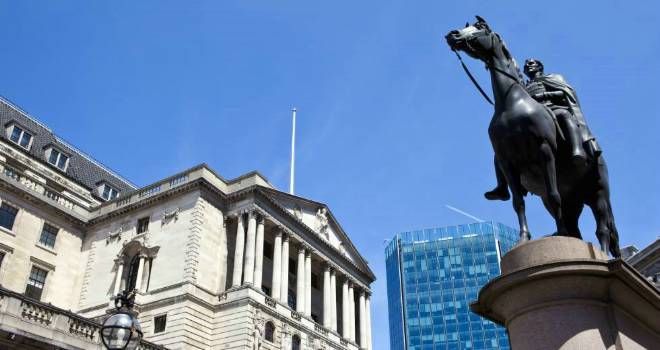
Reasons included twelve-month CPI inflation dropping to zero in August, lower increases in labour costs, and core inflation remaining subdued at around 1%, influenced both by restrained labour cost growth and by muted import cost growth.
In its minutes, the MPC admitted that there are a range of views among members about how each of the factors relevant for the outlook for inflation might evolve in future. At the meeting, the majority of members judged that the current stance of monetary policy remained appropriate. Ian McCafferty preferred to increase Bank Rate by 25 basis points, arguing that "building domestic cost pressures were likely to come to outweigh the dampening influence of the appreciation of sterling, causing inflation to overshoot the 2% target in the medium term".
As in recent months, the outlook for growth remains characterised by a number of opposing influences. The MPC argued that on the one hand, UK private final domestic demand, and consumer spending in particular, has been resilient, buttressed by the recovery in real income growth and productivity, supportive monetary policy, and robust business and consumer confidence. On the other hand, the on-going fiscal consolidation has had a restraining influence on activity and global growth has continued at below-average rates.
Some slowdown in the pace of the expansion and employment growth had been expected by the MPC as a natural consequence of the economy approaching a balance between its supply capacity and strengthening demand following the United Kingdom’s gradual recovery from the financial crisis.
However a deterioration in the global demand environment would slow the pace of expansion further. That could occur, for example, were the slowdown currently underway in a range of emerging economies, including China, to intensify.
All members agreed that the likely persistence of the headwinds restraining economic growth following the financial crisis means that, when Bank Rate does begin to rise, it is expected to do so more gradually and to a lower level than in recent cycles. Last month, the Centre for Economics and Business Research said that the Bank of England won't raise interest rates until the middle of next year, despite previous forecasts predicting a February rate rise.
Nick Dixon, Investment Director at Aegon UK, commented:
“The Fed’s much anticipated September rate increase never materialised which has eased pressure on the Bank of England to hike anytime soon. A trio of economic factors including higher unemployment, slowing GDP growth, and ‘low-flationary’ headwinds, pushes the likelihood of a rate rise toward the back end of 2016”.
Barry Naisbitt, Chief Economist at Santander, added:
"The Monetary Policy Committee once again decided to hold Bank Rate at 0.50% today. This came as no real surprise. With inflation at zero and some uncertainties about global economic prospects having been debated last month, the MPC members were unlikely to change their view from September. Since then there has been considerable volatility in the world economy and financial markets which will have been taken into account in today’s decision.
"That said, if the economy turns out as the MPC expected it to a month ago, talk of the possibility of higher interest rates could return to prominence around the turn of the year, as the Governor has noted. In the meantime, the MPC members will be watching the data closely and also looking across the Atlantic to see how the US Federal Reserve is viewing its position on rates after its decision a couple of weeks ago to hold rates at its September meeting. Looking ahead, the November Inflation Report will give the MPC an opportunity to set out the extent to which it sees any changes to the prospects for UK growth and inflation."





